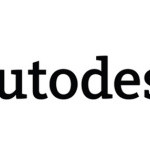- Industry: Software
- Number of terms: 4366
- Number of blossaries: 1
- Company Profile:
In animation, a part of an IK rotate plane handle that begins at the start joint, and along with the handle vector defines the IK handle’s reference plane.
The pole vector changes the orientation of the reference plane, so can change the orientation of the joint chain directly. This is because the joint chain’s degree of orientation, or twist, is defined as the difference in orientation between the reference plane and the joint chain plane. Also known as up-vector.
Industry:Software
In animation, a constraint that causes the end of a pole vector to move to and follow the position of an object, or the average position of several objects.
Industry:Software
In subdivision surface modeling, a view mode that creates a polygonal object that matches the base mesh (level 0) of a subdivision surface. This polygonal object is temporary, and deleted when you switch back to standard mode.
Industry:Software
In modeling, a polygonal object that consists of one or more shells. If there is more than one shell, there are one or more edges which only belong to a single shell (that is, the surfaces are disconnected).
Industry:Software
In modeling, an object created by faces that form a closed volume. Each edge in a solid is shared by exactly two faces. A solid always has an inside and outside, defined by the direction of the normals.
Industry:Software
In Fluid Effects, a 2D fluid that simulates small bodies of water. Waves, bubbles, ripples, and other surface displacements can be created using pond wake settings.
Industry:Software
Descriptive text that appears when the mouse cursor is held over an icon or button.
Industry:Software
In animation, the state of a skeleton at a given time (or frame), including the orientations of all the skeleton’s joints.
Industry:Software
A window that lets you select specific file references to be loaded or unloaded when the scene is opened.
Industry:Software
In polygonal modeling, the storing of shading and lighting information from the rendered look of a mesh in its vertex colors.
This lets a simpler display device (such as a console game rendering engine) show the objects as though they were shaded and illuminated without actually having the shading, lights, or textures, and without doing the rendering calculations. Also known as texture baking.
Industry:Software
